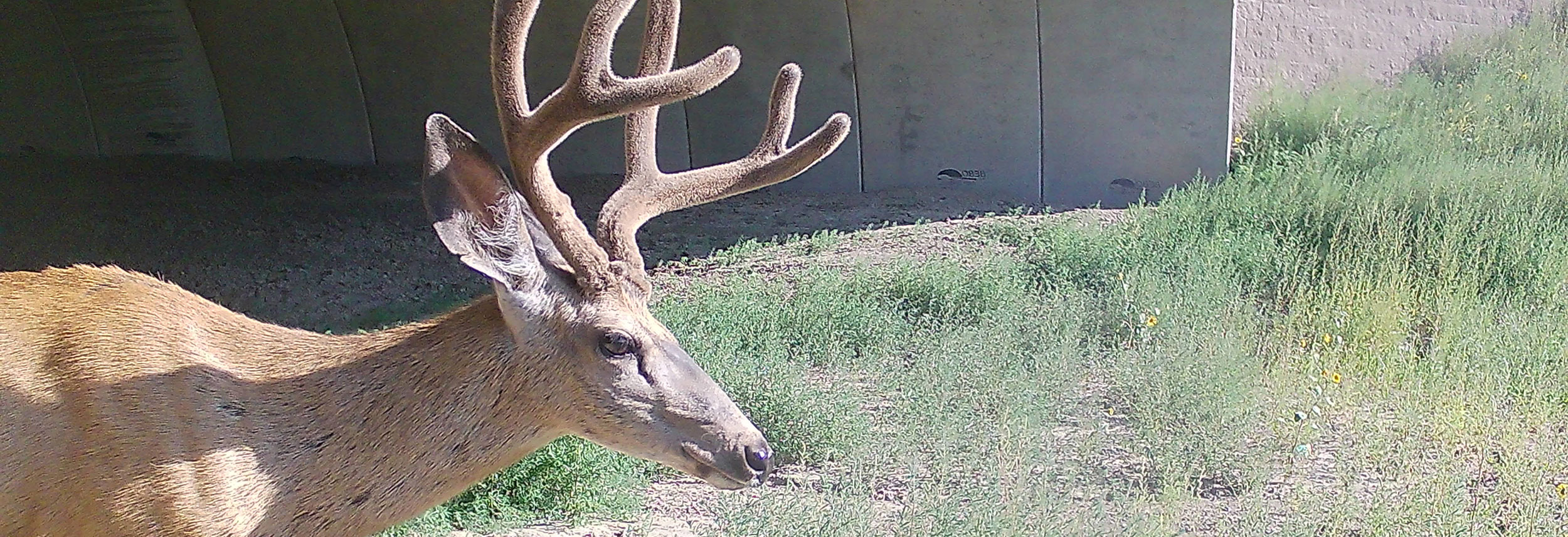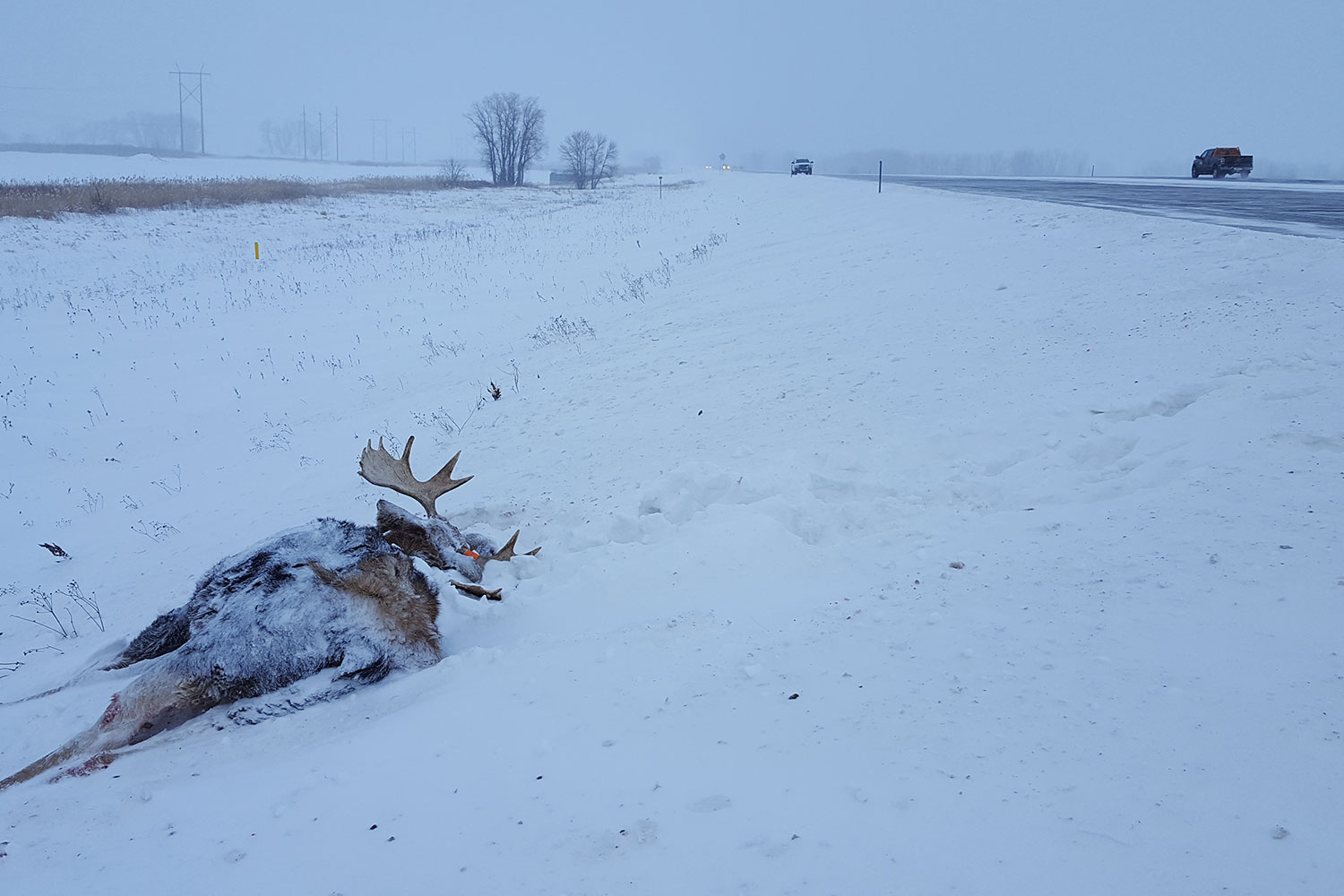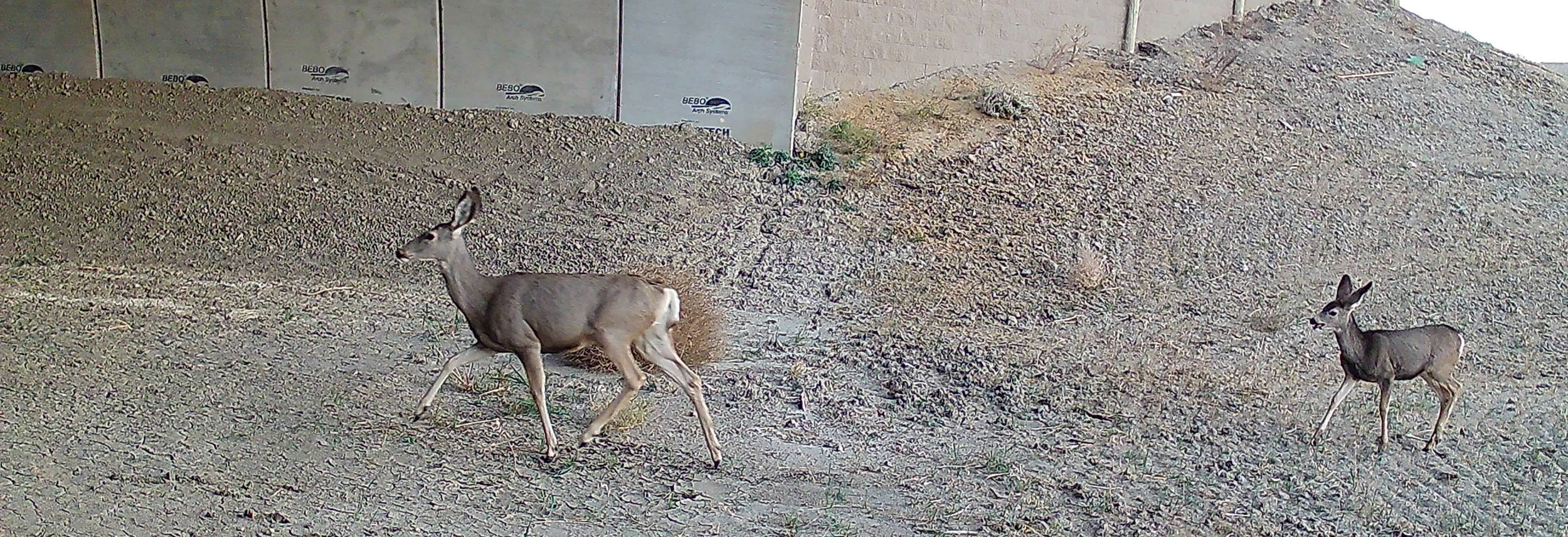NORTH DAKOTA OUTDOORS MAGAZINE

Wildlife Crossings
Proving their worth
By Ron Wilson
Nearly two years of monitoring wildlife crossings in western North Dakota revealed that a number of animals — from moose to mule deer to bighorn sheep to white-tailed deer and the occasional turkey — successfully navigated the underground passages hundreds of times out of harm’s way of passing traffic on U.S. Highway 85.

Bighorn sheep at the Long X wildlife crossing.
“The number of animals that have successfully gone through the crossings so far is very encouraging and we realize that we’re probably going to see an even higher number of animals use them in the future,” said Bruce Kreft, North Dakota Game and Fish Department resource biologist. “As the Game and Fish Department, we want to protect the animals, help fulfill their life cycles and allow them safe passage. And from a motoring public standpoint, these safe crossings translate to the possibility of hundreds of fewer wildlife-vehicle collisions.”
North Dakota’s first wildlife underpass was constructed on U.S. Highway 85 on the Lewis and Clark Wildlife Management Area near Williston, utilizing design criteria for moose. The second crossing, also on U.S. Highway 85 south of the Long X Bridge near the North Unit of Theodore Roosevelt National Park, was completed a few years later in 2021 to accommodate bighorn sheep movements, as well as the comings and goings of mule deer and other animals.
To monitor wildlife movement at the sites, Kreft said trail cameras were installed on both sides of the crossings. While cameras identified successful navigation through the structures, they also identified “deflections,” or animals that simply approached the crossings but didn’t fully commit.
With increased traffic and the proposed widening of U.S. Highway 85 from Belfield to Watford City, Kreft said there is a need to address human safety and economic losses attributed to vehicle-wildlife collisions by evaluating and designing crossings to accommodate the movement of large mammals and other critters.
The 62-mile stretch of highway from Belfield to Watford City wanders through unique habitat types, Kreft said, including native prairie, badlands and the Little Missouri River valley. This corridor is home to a host of North Dakota’s big game species including bighorn sheep, mule deer, white-tailed deer, elk and pronghorn, plus mountain lions, coyotes, the list goes on.
“These species all rely on different habitat types to fulfill various portions of their life cycles, which requires crossing Highway 85 numerous times in a year to fulfill those requirements,” Kreft said. “From our standpoint, a biological standpoint, habitat connectivity is the important aspect to this. Many of these animals need different types of habitat during, say, the breeding season, and these structures provide them safe passage to those different habitats.”
Some findings from the Long X crossing:
This crossing experienced 386 and 989 mule deer approaching the crossing in 2021 and 2022 with a successful crossing rate of 91% and 93%, respectively. The crossing was only monitored for 143 days in 2021, resulting in fewer animals approaching compared to 2022, but had similar animals crossing per day of monitoring.

Dead moose that had tried to cross over the road.
Bighorn sheep movements resulted in 58 and 171 animals approaching the structure in 2021 and 2022, with successful crossing rates of 81% and 89%, respectfully.
Both mule deer and bighorn sheep experienced an increase in crossing success from 2021 to 2022. This likely is contributed to behavioral learning and hopefully the start of generational learning of fawns and lambs.
“A lot of times with a new structure there’s generational learning that has to occur, that this structure is there for them and it’s a safe passageway for them to get to the other side,” Kreft said. “Typically, it takes about 3 to 4 years to really see the full degree of crossing for those animals. The ewes have to teach their lambs and the does have to teach their fawns that it’s a safe way to get to the other side for breeding purposes, feeding purposes, for whatever.”
Some findings from the Lewis and Clark WMA crossing:
This crossing had 177 and 654 whitetail deer approach with only a 36% and 69% crossing rate in 2021 and 2022, respectively. The significant increase in 2022 likely attributed to flooding in the underpass in 2021.
Moose had similar numbers approaching the structure in 2021 and 2022, at 188 and 184, respectively, resulting in crossing rates of 87% and 93%.
Kreft noted that many of the animals caught on trail cameras at both crossings were the same animals photographed more than once as they came and went. Not every image is a “new” animal.

A moose utilized the wildlife crossing near Williston.
As the North Dakota Department of Transportation continues its effort to widen U.S. Highway 85 from two to four lanes, Kreft said the Game and Fish Department and DOT are evaluating the construction of two wildlife crossings between Long X and U.S. Highway 200, one of which will go over the highway, not under it, to accommodate elk, pronghorn and mule deer.
Also of note, Kreft said DOT will construct another wildlife underpass crossing near the Summit Campground, also south of Long X about 3.5 miles.
“Our current elk monitoring program with the GPS collars is indicating that elk want to cross just south of the badlands area on Highway 85,” he said. “There’s a predominant number of animals that are moving across the roadway there so we’re currently evaluating that.”
An overpass structure, rather than one that runs under the highway, is being considered because research has shown that elk, and especially pronghorn, much prefer the former to the latter.
While evaluation and construction of wildlife crossings south of Long X continues, what’s certain is that wildlife crossings work in North Dakota.
“The implementation of wildlife crossings along Highway 85 has been exceptionally successful in reducing wildlife-vehicle collisions and providing habitat connectivity,” Kreft said. “Although we are unable to calculate the degree to which the crossings have reduced wildlife-vehicle collisions, they have successfully kept hundreds of animals off the road, creating a safer highway for the traveling public. As these animals become habituated to the crossings and generational learning of the fawns and lambs occur, the success of the crossings will be fully realized.”

